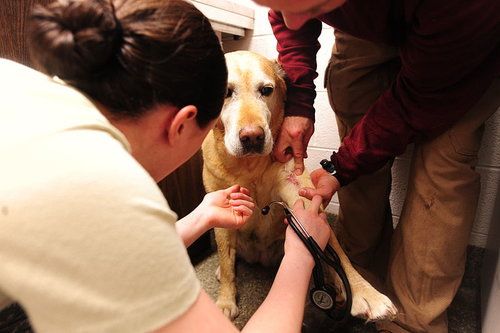Insipidus Diabetes in Dogs
Overview
There are two types of diabetes in dogs, mellitus (Type I) and insipidus (Type II). Insipidus diabetes (Type II) is characterized by the lack of vasopressin, which is an antidiuretic hormone whose job is to control the kidney’s absorption of water. Insipidus diabetes is rare in dogs but here are some symptoms to look out for and treatment options and the costs associated with them.
Symptoms
Insipidus diabetes (ID) can be characterized and observed by excessive thirst/drinking and high volumes of extremely diluted urine (clear). One side effect of ID is that the frequent urination can outpace water intake and cause dehydration.
Diagnosis
Diagnosis of insipidus diabetes typically includes two steps. The first is a simple lab test to measure your dog’s complete blood count (CBC) and a blood chemistry panel to measure liver, kidney and blood sugar levels. In addition to the blood test, a urinalysis will be performed to measure urine concentration to measure water intake vs. output.
Treatment
There is no cure for insipidus diabetes in dogs but Central diabetes insipidus (CDI) can be treated using a synthetic formulation of antidiuretic hormone (ADH) that is applied either as eye drops or by injection. Nephrogenic diabetes insipidus (NDI) is treated using oral hydrochlorothiazide and a low-salt diet. Treatment depends upon the definitive diagnosis, your dog’s health and several other factors.
Related Pages



















